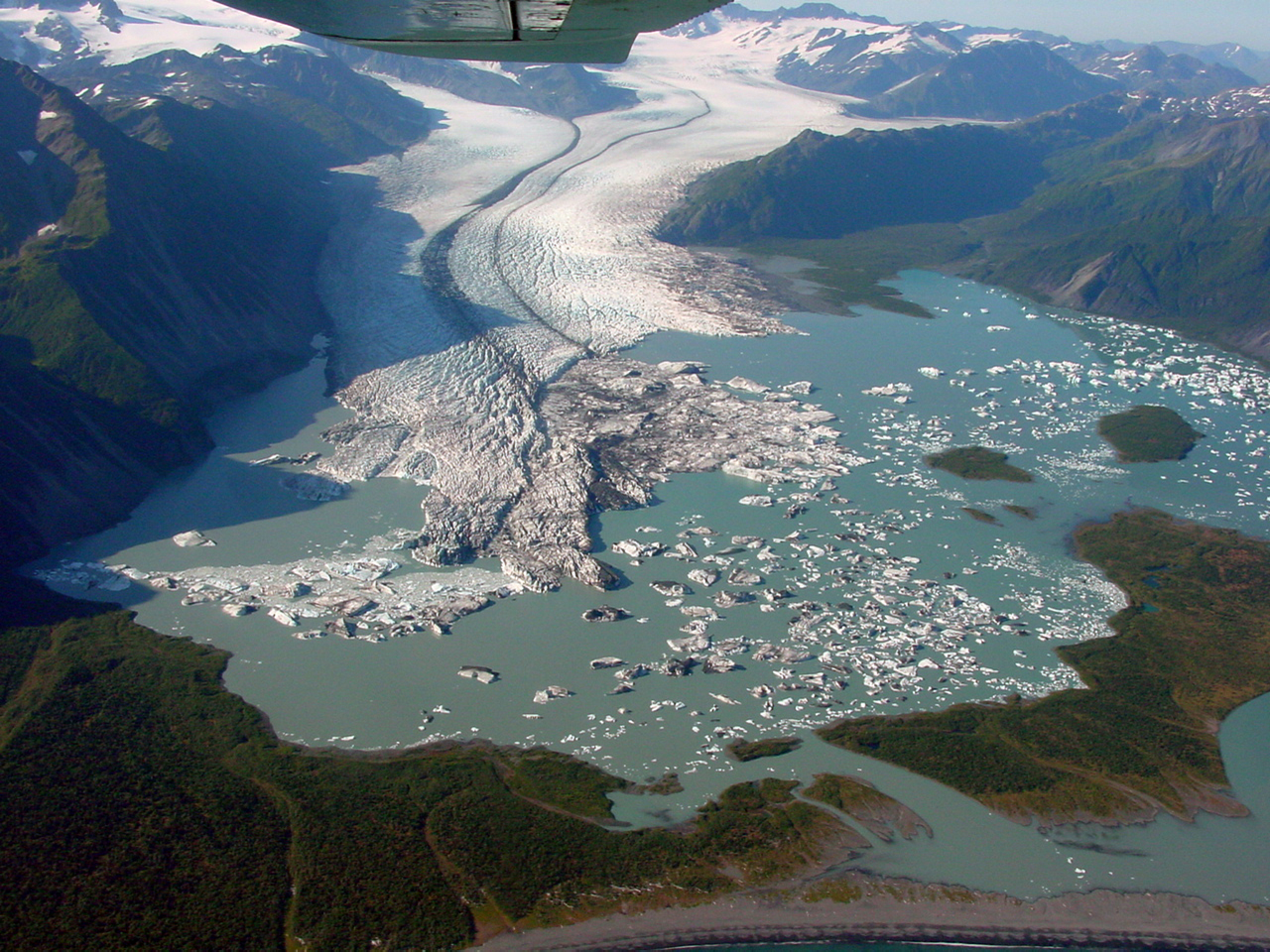Signal of anthropogenic climate change is written in the ice
Take humans out of the equation and the glaciers would be in better health.
by John Timmer - Aug 15 2014, 8:07am PST of ars technical

The world's glaciers are melting, driven to retreat by a warming trend that has persisted for well over a century. But glaciers are slow-moving bodies in more ways than one, as their huge mass of ice melts slowly, even when the temperatures rise rapidly. Since the onset of the current retreat traces back to the middle of the 19th century and the end of the Little Ice Age, it can be difficult to tell how much of recent ice dynamics is driven by recent warming.
Now, a new study has taken a close look how the world's glaciers have responded to natural and human-driven climate change. The results show that the majority of melting in the last century was still a hangover from the Little Ice Age, but a clear signal of human influence has emerged over the last few decades.
The authors of the new paper, who hail from Austria and Canada, recognize the challenge of discerning climate influences by following the behavior of glaciers. But they also suggest that there's a great opportunity in doing so. "Because glacier extent responds to changes in the glacier mass balance with a lag of decades to centuries," they write, "glaciers provide an opportunity to directly perceive long-term climate change, unobscured by interannual variability." In other words, the erratic behavior of short-term climate trends gets smoothed out by the slow adjustment of the glaciers.
Their effort is helped immeasurably by the fact that researchers have been keeping careful tabs on the behavior of the world's glaciers, and their data is available through the Randolph Glacier Inventory (RGI). While individual glaciers may be influenced by local behavior, the RGI covers the entire world, allowing researchers to assess global trends (they looked at everything outside of Antarctica). That data was fed into a model of glacial dynamics that had already been validated by comparison to real-world data.
Working backward from the start of the RGI data and using data on the global climate, the researchers were able to estimate the state of the glaciers in 1851—roughly the end of the Little Ice Age. They then coupled their glacial models with a set of global climate models and ran them under two conditions: one with only natural influences on the climate and another with those plus human-driven influences.
The natural-only model shows that the end of the Little Ice Age caused glaciers to retreat to higher altitudes over time, at which point their loss of mass began to stabilize. But include human influences on the climate and the loss of mass began to accelerate in the late 20th century and into the first decade of the next century (the authors cut off the data at 2010). The difference between the two conditions is significant for any set of decades going back to the 1960s.
That's not to say humanity was the dominant influence throughout the whole period. In fact, the authors estimate that for the entire 1850-2010 period, natural influences account for 75 percent of the glacier loss (although the error bars are a substantial 35 percent). If you look at only the last two decades, however, the two swap places, with humanity accounting for 70 percent of the glacial loss (error of ±25 percent).
So how good is this modeling? For most reasons, compared to the real-world data, the model does quite well. The big exception comes in parts of the Arctic (Svalbard and the northern Siberia), where the model predicts a greater ice loss than the glaciers are experiencing. There was also some variability in the extent to which a signal of human influence was apparent; it was highly significant in about half the geographic regions the authors looked at and slightly weaker in another three. For most of the remainder, the conditions were consistent with observations.
On its own, the new study wouldn't be a decisive indication of humanity's influence. And while glaciers may be insulated from the chaotic short-term fluctuations of surface temperatures, it takes a while for any influence on the temperature to make itself felt in the ice. That said, the new study suggests that the indications of a human influence are becoming obvious, which adds to the now-extensive body of similar evidence.